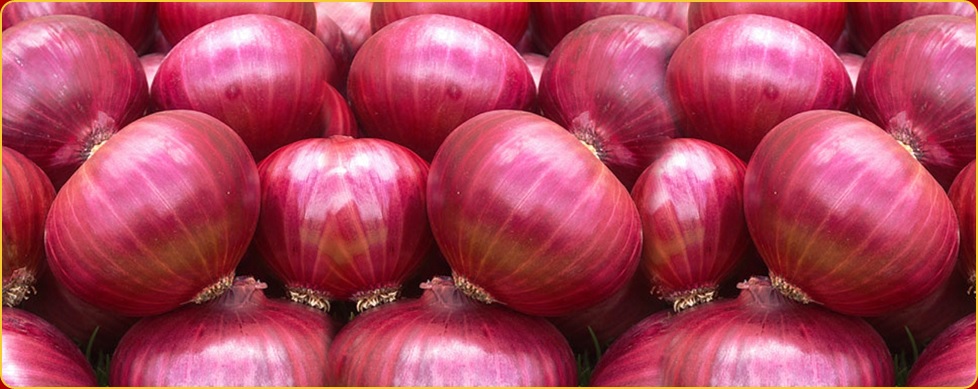
Know your Onions!
 In Bedfordshire, British Farmers claim to have grown medium to large in size red onions which are milder, sweeter and tastier and neither create bad breath nor cause tears when chopped. It took 20 years of cultivation to create a new “sweet” variety of red onion. These red onions have a weaker flavour and contain less sulphur which is less likely to make the eyes water and have apparently has lost their pungency. As a result, the irritant in onions – sulphur, is less likely to make the eyes water. They are often consumed raw, grilled or lightly cooked with other foods, or added as colour to salads. They tend to lose their redness when cooked. The red color comes from anthocyanidins such as cyanidin. Red onions are high in flavonoids.
In Bedfordshire, British Farmers claim to have grown medium to large in size red onions which are milder, sweeter and tastier and neither create bad breath nor cause tears when chopped. It took 20 years of cultivation to create a new “sweet” variety of red onion. These red onions have a weaker flavour and contain less sulphur which is less likely to make the eyes water and have apparently has lost their pungency. As a result, the irritant in onions – sulphur, is less likely to make the eyes water. They are often consumed raw, grilled or lightly cooked with other foods, or added as colour to salads. They tend to lose their redness when cooked. The red color comes from anthocyanidins such as cyanidin. Red onions are high in flavonoids.
The red onion (ceapa de Turda) from the lower Aries Valley and the Middle Mures valley, Turda (Cluj County, Central Romania) have a lighter sweeter taste and a particular aroma.
The other sweeter Red onion of Tropea, Italy (cipolla Rossa di Tropea) grown in Calabria, Southern Italy, named “Capo Vaticno” is used in making marmalade. Red Onions are an essential ingredient in countless recipes and are one of the best natural source of quercetin, a bioflavonoid which has been found to possess cancer fighting, anti-fungal, anti-bacterial, and anti-inflammatory properties. Red onions also plays a part in preventing and controlling the formation of intestinal polyps, suppressing the rhinoviruses that are the underlying cause of common colds, treating psoriasis, and inhibiting the replication of viruses including the herpes simplex virus that can cause cold sores. Have half an onion a day and keep stomach cancer at bay. One ounce (28 grams) of red onions contain only 11 calories, as they are mainly made of carbohydrates and water which contains absolutely no fat.
